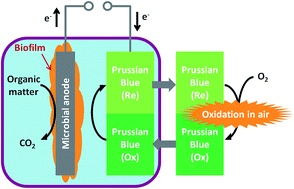23 Jan 13:36
by Lin Li, Bin Yan, Jingqi Yang, Lingyun Chen, Hongbo Zeng

A novel mussel-inspired injectable hydrogel with self-healing and anti-biofouling capabilities is developed and it possesses great potential as a drug-delivery carrier. The hydrogel can heal autonomously from repeated structural damage and also effectively prevent non-specific cell attachment and biofilm formation.
23 Jan 08:03
by Wansuk Choi, Joung-Eun Gu, Sang-Hee Park, Seyong Kim, Joona Bang, Kyung-Youl Baek, Byoungnam Park, Jong Suk Lee, Edwin P. Chan and Jung-Hyun Lee

ACS Nano
DOI: 10.1021/nn505318v

30 Jul 00:48
by Michelle C. Barry, Kiril Hristovsk and Paul Westerhoff

Environmental Science & Technology
DOI: 10.1021/es500435e

25 Jul 14:06
by Haizhou Yu, Xiaoyan Qiu, Suzana P. Nunes, Klaus-Viktor Peinemann
Abstract
The combination of nonsolvent-induced phase separation and the self-assembly of block copolymers can lead to asymmetric membranes with a thin highly ordered isoporous skin layer. The effective pore size of such membranes is usually larger than 15 nm. We reduced the pore size of these membranes by electroless gold deposition. We demonstrate that the pore sizes can be controlled precisely between 3 and 20 nm leading to a tunable sharp size discrimination in filtration processes. Besides fractionation of nanoparticles and biomaterials, controlled drug delivery is an attractive potential application.

Golden pores: Membranes with tunable cylindrical pore diameters between 3 and 20 nm were manufactured and tested for nanoparticle separation and controlled delivery of proteins. The pore size was regulated by electroless gold deposition. The precise size discrimination, facile and scalable fabrication processes, and biocompatible characteristics favor potential uses in the purification of nanoscale materials and drug delivery.
28 Jun 11:52
by Zhi-Yu Yang, Lin-Jian Jin, Guo-Qian Lu, Qing-Qing Xiao, Yu-Xia Zhang, Lin Jing, Xiao-Xue Zhang, Yi-Ming Yan, Ke-Ning Sun

Capacitive deionization (CDI) is a competent water desalination technique offering an appropriate route to obtain clean water. On page 3917, Y.-M. Yan, K.-N. Sun and co-workers design and prepare a 3D-structured, graphene-based electrode using sponge (polyurethane, PU) as a template. The electrode possesses a large surface area, wide pore size distribution from nanopores to micropores, and low internal resistance, therefore exhibiting a remarkable electrosorptive capacity of 4.95 mg g−1 and a desorption rate of 25 min.
11 Jun 04:40
by Katherine E. Moore, Moritz Pfohl, Frank Hennrich, Venkata Sai K. Chakradhanula, Christian Kuebel, Manfred M. Kappes, Joe G. Shapter, Ralph Krupke and Benjamin S. Flavel

ACS Nano
DOI: 10.1021/nn500756a








